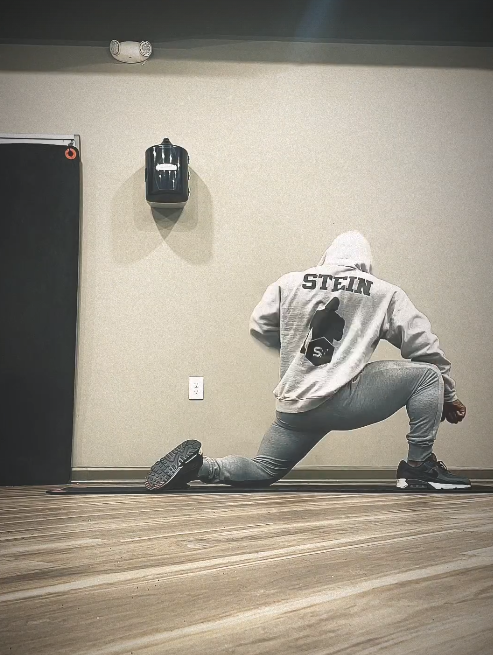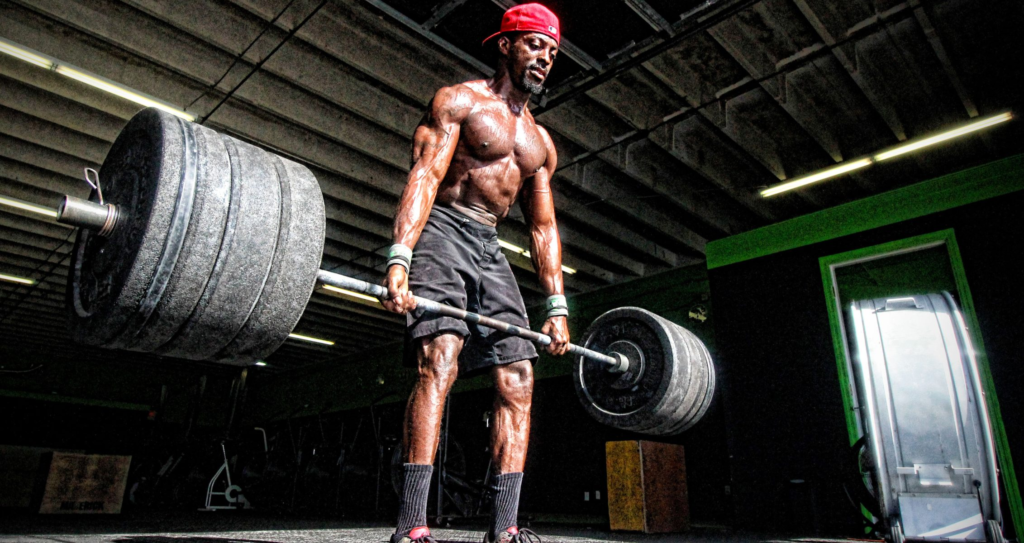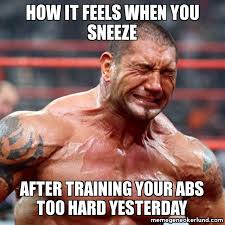
Warming Up Properly
It does not matter if you’re an athlete, a weight lifting competitor, or a gym enthusiast, you should be warming up before you lift. But, as with pretty much everything workout-related, the internet has a lot of conflicting information about warming up. While there is seldom a “best” way to do something, most coaches and experienced athletes would agree that the best warm ups share some key factors.
In this post, we will talk about the most common warm up methods and, more importantly, learn how to determine which kind of warm up is best for maximizing your performance during your workout.
What Is A Warm Up?
A proper pre-lifting warm up is about priming your muscles, your nervous system, and your mind to train. For most athletes, doing a few reps — or even a lot of reps — with an empty bar doesn’t get your body adequately prepared for a heavy bench session. However, empty bar reps can be a key part of your warmup. To perform a complete warm up, though, you need to take different components of your training into account.
The goals of any warm up are:
Activate your muscles to reduce the risk of injury from lifting “cold.”
Get your head in the game so that you’re focused on the lifting itself.
Raise your body temperature to prepare yourself — and your cardiovascular system — for lifting.
The idea is simple enough. Putting in a little bit of work before your workout proper will make your training more comfortable and less threatening both mentally and physically, allowing you to focus on making the strength, size, or performance gains you’re really after.
It’s best not to be too fickle about warming up. A jog is great, but it may not be enough to prime your muscles for a proper leg day. A few swinging kicks can be helpful, but they won’t get your heart and lungs ready to pull heavy weight. And if your mind is on dinner while you’re warming up, it will likely stay on dinner when you step under the bar.
So even if it’s a quick workout, you need to reserve at least a few minutes to get your body ready. You might need to include multiple components to reap maximum gains.
Benefits of a Proper Warm Up
A proper warm up can help to increase performance and minimize injury risks, many of which are very preventable if the warm up is taken seriously. Below is a brief overview of the benefits of a proper warm up. If you want to avoid injury and lift heavier, don’t skip out on them.
Increase Body Temperature
Warming up is literally about getting warm — a good warm up should increase your core temperature. Stoking that internal fire will help improve bodily function and circulation (more on that below). It’ll also make your muscles that much more flexible. Even if you don’t think of yourself as a flexible athlete, you need to lubricate those joints before sinking into the bottom of a squat.

Increase Blood Flow and Oxygen Delivery
A proper dynamic warm up will increase muscle blood flow and total body blood circulation. This is key for delivering oxygen-rich blood to the muscle tissue and clearing out metabolic byproducts from previous training sessions.
Additionally, a proper dynamic warm up will begin to shunt blood flow to the gut. You’ll get higher distributions of total body blood flow to active muscle tissues. With your blood already flowing where it needs to before you start your lifts, you can further enhance your exercise output and performance.
Mental Preparation
A dynamic warm up gives you the chance to mentally prep for a training session or competition. If you move through the same dynamic warm up routine before each workout, it can become a ritual. Lifting rituals can be extremely soothing and centering as you pump yourself up for a dialed-in session. Not to mention that keeping a strong routine on competition day will help your body and mind remember that you can lift that weight.
Injury Resilience
The better you’re warmed up, the more likely you are to avoid injury during your training. With your blood pumping to the muscles you’re about to use, you’re less susceptible to muscle strains. Your connective tissues will be warmer, with more nutrients and energy from the blood.
On top of that, your heart and lungs will be ready to support you during heavy lifts. That will make you less likely to strain unnecessarily hard — the better tuned in your breathing, the more effective your form can be. All of this means that you’ll be able to train harder and more consistently.
Common Warm Up Strategies
If you’ve spent any time in strength circles, you know that there are a lot of different feelings out there about various warm up protocols. In reality, very few things are entirely good or entirely bad. The best warm up protocols — like the best programs — are developed with your own body, goals, and the upcoming session in mind. To make sure you can choose the best warm up for you, it helps to be familiar with six of the most common warm up strategies.
Static Stretching
Performing static stretching before a strength session is somewhat controversial. Instead of banning static stretching from your routine altogether, you can use it strategically. Move through some static stretches to make a mental inventory of any tightness or stiffness. That way, you can address it with the rest of your warm up routine.

Foam Rolling/Myofascial Release
Light foam rolling and other active release manual therapies often find their way into a good warm up.
Methods like foam rolling, soft tissue massage, and lacrosse ball myofascial release are all options for working out specific aches and pains. Foam rolling may be especially helpful before sprinting or workouts that require extra flexibility.
Light Cardiovascular Exercise
Light cardio can increase core body temperature and circulation throughout the body. Think rowing, biking, skipping rope, and jogging — go light here. If your entire workout is going to be focused on rowing, for example, you’ll need to warm up for that, too. But if you’re only using these activities to get your heart going, take it nice and easy.
You’re not looking to set any new personal pace records during your cardio warm up. Instead, think of this stage as a warm up for your warm up. It’ll allow your body to be already ready to slip into faster-paced movement sequences afterwards.
Dynamic Warm Up
The dynamic warm up is a pivotal aspect of a training program. This part gets you sweating, breathing heavier, and mentally prepped for the rigor to come. Make sure you’re moving with intention. Be specific about what moves you’re choosing (more below), and don’t be concerned if your dynamic warm up feels difficult. If you’re doing it right, it should be just a little bit taxing — not fatiguing, but taxing enough to really charge your body up.

Activation Exercises
Following a brief dynamic warm up, you’ll want to perform a few activation exercises. These movements should be specific to your day’s session. They’ll increase muscle activation and movement coordination of the muscle groups. You’ll get your different muscle groups working together as needed for whatever lifts you have programmed for the day. The more “turned on” the muscles are, the more you’ll be able to fire all cylinders when you load up the bar.
Light-Load Skill/Technique Movements
Before jumping into the work sets, use an empty barbell and light loaded movements to prepare for the training session. It’s not “weak” to warm up with just the bar — you’ll be patterning your mind and muscles to prep for the task at hand. Using ramp up sets will help your muscles be at their peak readiness by the time the bar gets heavy.
Of course, like the rest of your warm up, “ramp up” sets might require some trial and error. Take note of how different tweaks to your warm up impact your performance, and remember that not all lifters will have the same ramp up needs.
How Long Do You Have to Warm Up?
If you’ve got a good lifting session planned, it’s normal to be eager to get started. But if you want to have the most eHffective session possible, budget your time so that you’re devoting adequate time to your warm up. That might mean slicing off a couple of extra accessory exercises from the end of your workout, but it’ll be well worth it.
Light Total-Body Cardiovascular Exercise (Bike, Row, Jog, etc) — three to five minutes.
Static Stretching (optional) and/or Foam Roll — three to five minutes.
Dynamic Warm Up — five minutes.
Activation Exercises (session specific) — three to five minutes.
If you skip static stretching and foam rolling, this should take you a little over 10 minutes. If you opt for every modality, it can take you closer to 20 minutes. If you have the time to devote to it, great. But keep in mind that you don’t need to always perform every part of the warm up buffet to get prepared for your workout.
Sample Warm Ups
You’re going to warm up differently for a long run than you are for a heavy lifting session. Further, the way you warm up for your upper body training isn’t the same as your pre-deadlift warmup. It’ll take some trial and error to discover what works best for your body, but we can lay out a few samples to help guide you in the right direction.

Squat Warm Up
To warm up before squatting, you’ll want to focus on your ankle mobility and hip mobility. Especially if you’re low bar squatting, you’ll also want to warm up your shoulders, lats, and traps.
For overall body activation — light cardio, three to five minutes.
For ankle mobility — deep squat shifts with kettlebell, four sets of 45 seconds.
For hip mobility — 90/90 flow, three sets of 45 seconds back and forth.
For shoulder, lat, and trap activation — band pull aparts, three sets of 15-20 reps.
For light load and technique — two sets of 12 long pause squats with an empty bar.
Deadlift Warm Up

Deadlifts require your entire body to be warm, activated, and ready to go. You’ll want to focus on some of the same “problem” areas that you do before squatting. Make sure you’re moving slowly and with intention instead of just going through the motions.
For overall activation — light cardio, three to five minutes.
For hip activation — glute bridges, three sets of 15 reps.
For hamstring and lat activation — dumbbell RDL to row, three sets of 15 reps.
For light load and technique — two sets of 15 bent over rows with an empty bar, followed by practice deadlifts as needed.

Upper Body Warm Up
Whether you’re rowing, pressing, or benching, you’ll want to focus on your shoulder health during your warm up. This will require activating your rear delts, traps, and lats to help protect from injury. You’ll also be able to lift heavier and more effectively if you prep your prime movers.
For overall activation — light cardio, three to five minutes.
For shoulder, lat, and trap activation — face pulls, three sets of 15 reps.
For tricep and chest activation — two sets of 10-15 tricep pushups.
For full body alignment — three sets of 10 bird dogs.
For light load and technique — two to three sets of 10-15 reps with an empty bar in the compound lift you’ll be performing.
Wrap Up
A good warm up can make a world of difference in the gym if you go about it correctly. Consider your goals, your body, and your session before determining which warm up to use. There is a lot of consistency to be had in your sessions if you’re intuitive about your preparation. Bring more specificity to your warm up to maximize performance and decrease injury risks.






